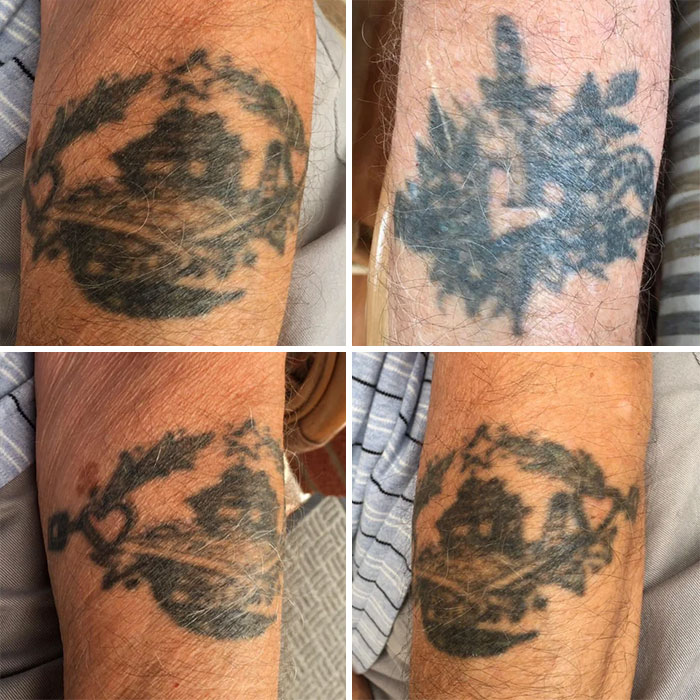What Happens to Tattoos Over Time?
Tattoos are a form of personal expression that can last a lifetime, but as time passes, even the most vibrant designs may begin to change. Understanding how tattoos age, especially after 50 years, can help you make informed decisions when getting inked. In this article, we’ll cover what happens to tattoos over decades, factors influencing tattoo aging, and how to maintain the look of your ink as you grow older.
1. How Tattoos Change Over 50 Years
As the years go by, tattoos may lose their original sharpness and color. Here’s a breakdown of what generally happens:
- Color Fading: Colors are likely to fade, with black ink holding up the best over time. Bright colors like red, yellow, and white may lose intensity faster.
- Blurring of Lines: The crisp lines of detailed tattoos can blur due to skin stretching, natural cell changes, and the body’s healing processes.
- Ink Migration: In some cases, ink may migrate, creating a ‘halo’ effect around the tattoo. This occurs because ink particles can shift slightly within the skin layers over time.
While these changes are natural, proper aftercare and lifestyle choices can significantly influence how well your tattoos age.
2. Factors Affecting Tattoo Aging Over Decades
Several factors influence how tattoos look after 50 years:
1. Skin Type and Body Placement
- Skin Type: People with thicker or more elastic skin may experience less noticeable aging effects. Conversely, tattoos on thinner or more delicate skin may be more susceptible to blurring and fading.
- Placement: Tattoos in areas with less sun exposure (like the torso) or minimal movement (like the upper back) tend to age better than tattoos on hands, feet, or other high-movement areas.
2. Ink Quality and Tattooing Technique
- High-quality ink and professional techniques ensure longer-lasting tattoos. Skilled tattoo artists can create tattoos with precision that withstands aging better than poorly done designs.
- Shading and layering techniques can impact how the tattoo ages, with some intricate designs aging more gracefully than simple line tattoos.
3. Sun Exposure
- Sunlight is a significant factor in tattoo aging. UV rays break down ink particles, causing fading and discoloration. Regular sun protection, such as high-SPF sunscreen, can help maintain tattoo vibrancy over time.
4. Personal Care and Lifestyle
- Hydration: Moisturized skin helps tattoos stay vibrant and prevents the drying effects that contribute to wrinkling.
- Healthy Lifestyle: A balanced diet, regular exercise, and avoiding smoking can improve skin health, which benefits the appearance of tattoos as you age.
- Avoiding Abrasive Products: Harsh scrubs and chemical exfoliants can prematurely wear down the skin over tattooed areas, affecting the appearance.
3. What to Expect from Tattoos as You Age
After 50 Years: Tattoos will likely be less vibrant and potentially more blurred compared to when they were new. However, tattoos created with professional techniques and high-quality ink, along with regular aftercare, can still hold aesthetic appeal, even after 50 years.
For Older Adults Getting New Tattoos: People over 50 getting tattoos may experience slightly slower healing and potential skin sensitivity. Choosing darker colors and simpler designs can help tattoos age gracefully, as these elements tend to withstand natural skin changes more effectively.
4. Tips for Keeping Tattoos Looking Great for Decades
To make your tattoos last as long as possible, consider these maintenance tips:
- Stay Hydrated and Use Moisturizer: Keeping skin hydrated prevents dryness, which can lead to fading.
- Apply Sunscreen Regularly: Protect tattoos from UV exposure to prevent color fading.
- Avoid Excessive Weight Fluctuations: Rapid weight gain or loss can stretch or distort tattoos, particularly in areas like the stomach or upper arms.
- Follow Up with Your Tattoo Artist: For tattoos that start to blur or fade significantly, consider touch-ups by a professional tattoo artist.

It is exciting to go through a terrific post for a change. You’ve made a lot of intriguing points and I also accept. This has made me think and for that I actually thank you.